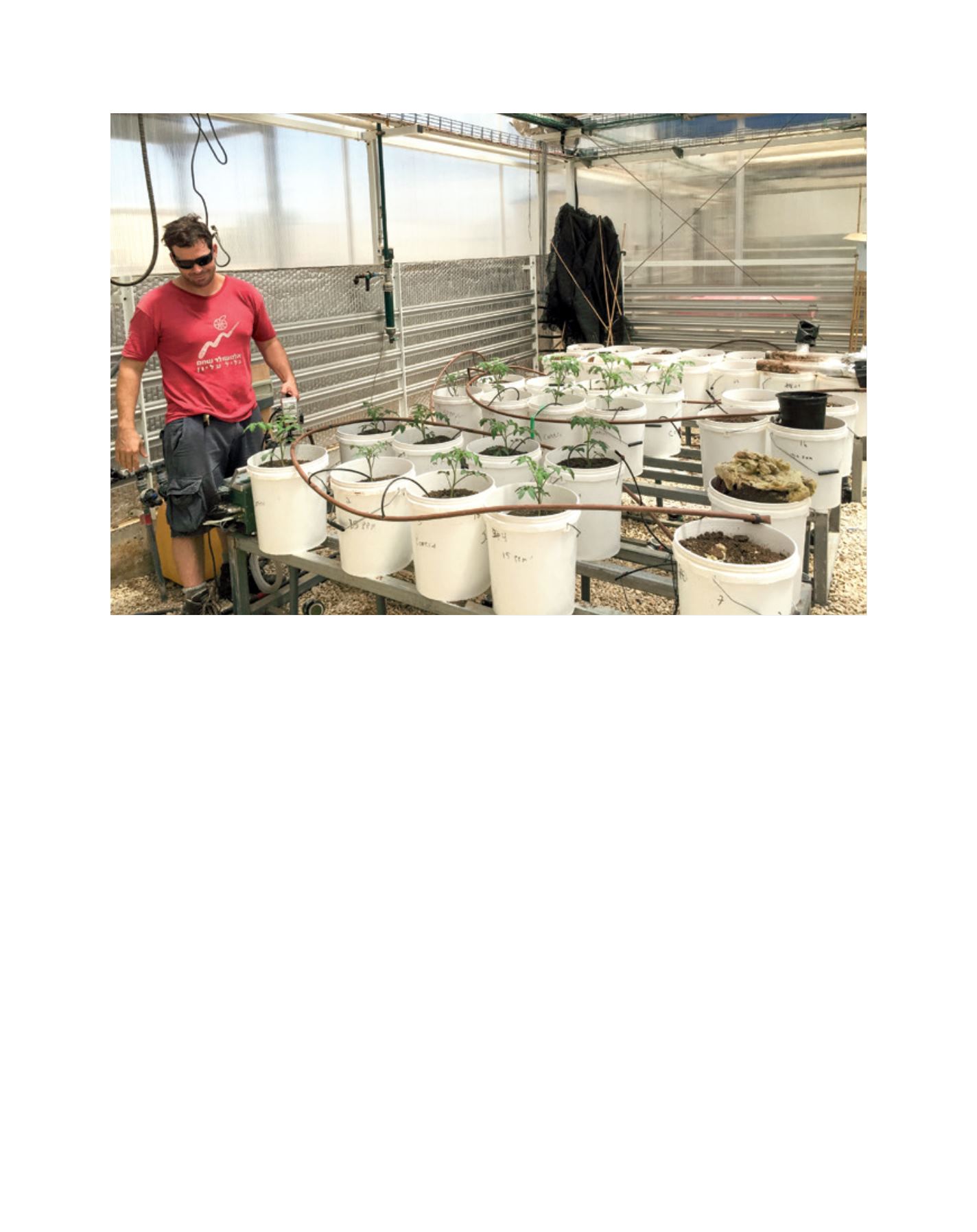

[
] 94
75 per cent of Israeli irrigation relies on drip systems, roughly
half of which involve subsurface systems. Paradoxically, as
the systems’ sophistication increased, prices began to drop.
While Israeli agriculture was embracing drip irrigation, a
parallel process took place in terms of irrigation water: treated
sewage effluents became the predominant source of water for
Israel’s agriculture sector. Standards were set for reuse of
effluents and in 1956 a national masterplan was adopted that
envisioned the ultimate utilization of 150 million cubic metres
by Israel’s agricultural sector. Today, three times that amount
of treated wastewater is recycled. As of 2015, the country
recycles 86 per cent (400 million m
3
) received at its treatment
plants. This is a far greater commitment than other countries.
For instance, Spain, the European leader in the field, report-
edly recycles 12-17 per cent of its sewage; Italy and Australia
roughly 10 per cent. Over half the irrigation water used by
farmers in Israel today is recycled effluents (50 per cent at
secondary treatment levels and 50 per cent tertiary), allowing
for the cultivation of 130,000 hectares of agricultural lands.
Reuse of treated sewage can substantially expand water
resources but is not without environmental and public health
ramifications. Recycling sewage initially raised concerns
about microorganisms: beyond affecting farmers deleteriously
through direct contact, irrigated effluent can leave consumers
exposed to produce with a range of harmful bacteria. Over the
years, upgraded Israeli wastewater treatment levels largely elim-
inated this hazard. Improved compliance with the Ministry of
Health’s effluent irrigation standards, which stipulated increas-
ingly high water quality standards for irrigating different crop
types, also contributed to substantially reduced risk.
Not all contaminants are easily removed through treatment.
For instance, boron is a critical element for plants but is toxic
when concentrations are excessive. As conventional sewage
treatment does not eliminate boron, its presence in effluents
began to affect crop yields in the 1980s. Israel quickly moved
to ban boron in laundry detergents and immediately improve
the recycled wastewater quality provided to farmers.
Other ‘microcontaminants’ such as pharmaceutical resi-
dues, remain a problem. Hebrew University’s Benny Chefetz’s
laboratory has identified high concentrations of pharmaceu-
tical compounds such as lamotrigine (an anticonvulsant
drug) in crops irrigated with secondary treated wastewater
that cross the threshold of toxicological concern (TTC) level
for a child (25 kg) who consumes half a carrot a day (60 g
carrot/day). Consumption of sweet potato leaves and carrot
leaves by a child (25 kg) would also surpass the TTC level for
epoxy-carbamazepine (an epilepsy drug) at 90 g leaves/day
and 25 g leaves/day, respectively. The risks associated with
these ‘contaminants of emerging concern’ are only now being
characterized, but they are probably of less concern than the
oldest water pollutant of them all: salinity.
Salts, almost without exception are not removed during
sewage treatment fromwastewater streams. Wastewater by defi-
nition has higher salinity relative to its contributing background
Ben Gurion University researchers evaluate the efficacy of irrigation waters with different salinity levels
Image: Alon Tal
L
iving
L
and
















